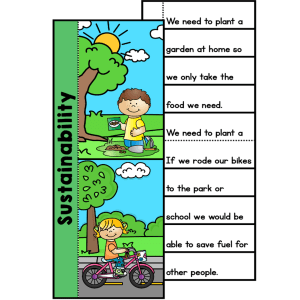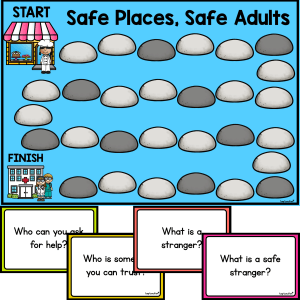Gumball Capacity Worksheets

Description
Get ready to add some colourful fun to your Maths lessons with our Gumball Capacity Worksheets. These engaging worksheets are designed to help students explore the concept of capacity in a visual, hands-on way. By focusing on terms like full, nearly full, half full and nearly empty, students will build a strong understanding of comparative capacity using a relatable and playful theme.
Each worksheet presents a series of gumball machines in various states of fullness, allowing students to develop language and reasoning skills around the concept of volume. This is a fantastic resource to introduce or reinforce the idea of capacity using informal units and everyday terms. The clear visuals and easy-to-follow instructions make this an ideal activity for young learners, especially those in Foundation or Year 1 who are just beginning to explore measurement.
With three differentiated worksheet versions included in the download, this resource is perfect for meeting the diverse needs of your students. Whether they are colouring, drawing, or matching capacity words to images, each student can engage with the task at their own level. This flexibility ensures that all learners feel successful while deepening their understanding of how capacity can be visually represented and described using comparative language.
Key Learning Outcomes
- ✅ Identify and describe capacity using everyday language (e.g. full, half full, nearly empty)
- ✅ Compare different volumes using visual representations
- ✅ Engage in hands-on learning through colouring, drawing, and matching tasks
- ✅ Develop foundational mathematical vocabulary and reasoning skills
What’s Included
- 3 differentiated capacity worksheets featuring gumball machine visuals:
- - Version 1: Colour the gumball machines to show different levels of capacity
- - Version 2: Draw gumballs to match a given capacity word
- - Version 3: Match capacity words to illustrations of gumball machines
- Clear student instructions on each page
- Simple black-and-white layout for easy printing and student focus
Materials Needed
- Printed worksheets (choose the version most suitable for each group)
- Pencils, crayons or markers for drawing and colouring
- Scissors and glue (if using the matching version)
- Optional: laminated copies and dry-erase markers for reusable practice
How to Use
- Begin with a class discussion about what capacity means and show examples using real containers filled with water or objects.
- Introduce the four key capacity terms: full, nearly full, half full, and nearly empty. Use visuals or physical examples to illustrate each.
- Distribute the worksheet version that best matches your students’ needs and model one or two examples as a class.
- Allow students to complete the task independently or in small groups, supporting them as needed with vocabulary and reasoning prompts.
- Bring the class together at the end of the activity to reflect on their learning and share examples of how capacity can be represented in real life.
Ideas for Classroom Use
- 💡 Use as an introduction to your measurement unit focused on capacity
- 💡 Include in your Maths rotations as a visual and creative task
- 💡 Set up real-life gumball machine stations with pom-poms or counters for extension
- 💡 Assign different versions to differentiate across ability levels or repeat with a new format for revision
Top Teacher Tips
- 💛 Laminate the worksheets and pair with dry-erase markers for a reusable centre task
- 💛 Use this activity as a springboard for making your own class gumball machine models
- 💛 Add speech bubbles to the gumball machines and have students write capacity descriptions as sentences
- 💛 Reinforce vocabulary by using flashcards or anchor charts alongside the activity
This cheerful and low-prep resource is a fantastic way to explore measurement and capacity in a way that is meaningful, visual and fun. With three activity types and easy differentiation, Gumball Capacity Worksheets are a must-have addition to your early years measurement toolkit.
Additional information
| Number of Pages | 4 |
|---|---|
| File Format | |
| Australian Curriculum Code | AC9M1M01, AC9M2M01, AC9MFM01 |
Australian Curriculum V9
F - 6
Lorem ipsum dolor sit amet, consectetur adipiscing elit.
Lorem ipsum dolor sit amet, consectetur adipiscing elit.
Lorem ipsum/ Lorem ipsum/ Lorem ipsum
Lorem ipsum dolor sit amet, consectetur adipiscing elit.
Lorem ipsum dolor sit amet, consectetur adipiscing elit.
Lorem ipsum/ Lorem ipsum/ Lorem ipsum
Lorem ipsum dolor sit amet, consectetur adipiscing elit.
Lorem ipsum dolor sit amet, consectetur adipiscing elit.
Lorem ipsum/ Lorem ipsum/ Lorem ipsum
Lorem ipsum dolor sit amet, consectetur adipiscing elit.
Lorem ipsum dolor sit amet, consectetur adipiscing elit.
Lorem ipsum/ Lorem ipsum/ Lorem ipsum
Lorem ipsum dolor sit amet, consectetur adipiscing elit.
Lorem ipsum dolor sit amet, consectetur adipiscing elit.
Lorem ipsum/ Lorem ipsum/ Lorem ipsum





